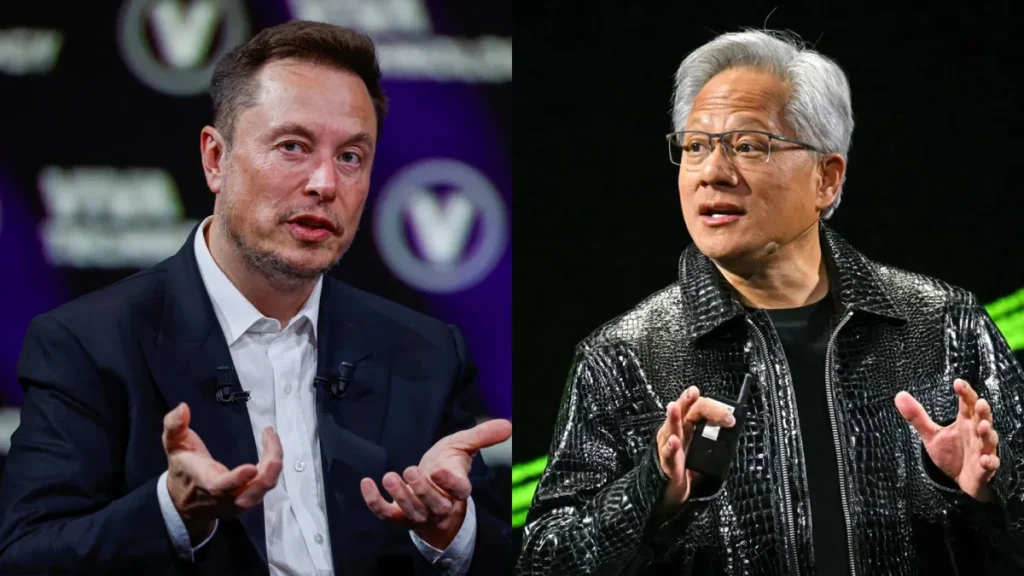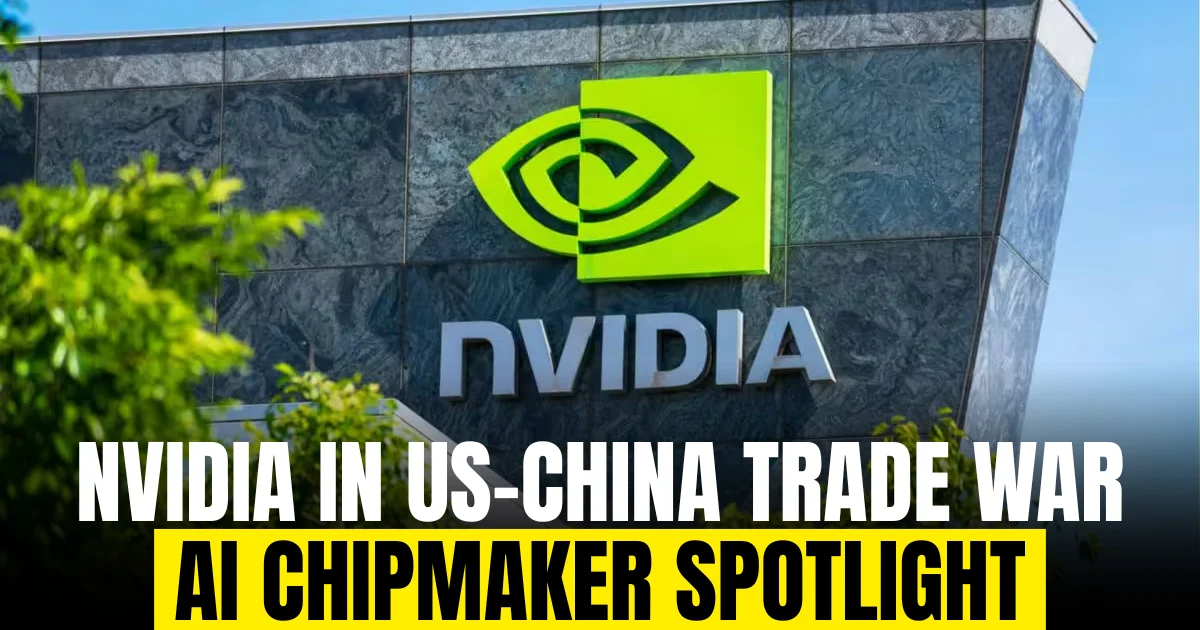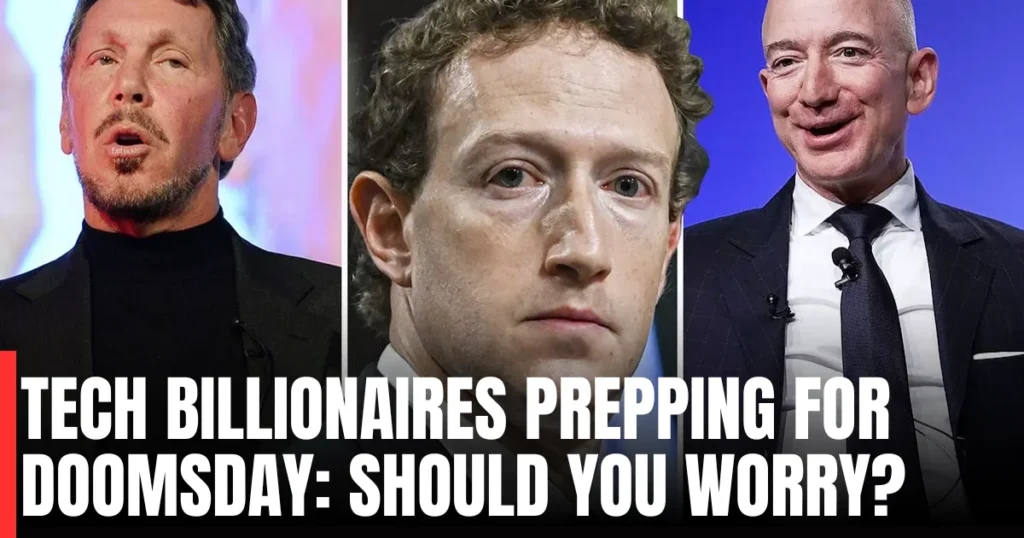Discover why Nvidia, the AI chip giant, is caught in the US-China trade war. Explore trade tensions, AI tech, and market impact. Read now!
Table of Contents
Why Nvidia, the World’s Leading AI Chipmaker, is Entangled in the US-China Trade War
Nvidia, the Santa Clara-based tech giant, has emerged as the world leader in AI chip technology, powering the massive data centers behind AI tools like OpenAI’s ChatGPT. However, its rapid growth has placed it squarely in the middle of escalating US-China trade tensions, turning advanced semiconductor technology into a national security and geopolitical bargaining chip.

Nvidia’s Rise in the AI Chip Market
Founded in 1993 by Jensen Huang, Nvidia initially focused on graphics processing units (GPUs). Today, the company dominates the AI chip market, fueling data centers across the globe. Key points include:
- Nvidia’s market capitalization approaches $5 trillion.
- Chips are used by OpenAI and other tech giants for AI training and deployment.
- The H20 chip, released in 2024, is central to Nvidia’s competitive edge.
“Nvidia has gotten caught in the middle of a trade dispute between China and the United States … AI has become a matter of national security,” says Gil Luria, head of tech research at D.A. Davidson.
Jensen Huang – The Visionary Behind Nvidia
Jensen Huang, born in Taiwan, co-founded Nvidia and led it to prominence in AI chip development. Highlights of his career:
- Stanford and Oregon State graduate.
- Former microprocessor designer at AMD.
- Worth $167 billion, recognized as a tech “rockstar” in Taiwan.
- Pioneered AI data center architecture, fueling global demand.
Huang argues that restricting AI chip sales to China might accelerate China’s own AI development, potentially challenging US dominance.

Nvidia’s Role in the Global AI Chips Race
Nvidia’s AI chips are at the heart of modern AI development. Their architecture has become the standard for data centers:
- Powers OpenAI’s ChatGPT and other AI models.
- Nvidia plans to invest up to $100 billion in OpenAI, providing chips by late 2026.
- Competing with AMD for major AI partnerships.
Key Insight: Customers now select their AI hardware stack carefully, making Nvidia’s technology crucial for commercial and open-source AI applications.
Why Nvidia is at the Center of US-China Trade Tensions
The US government has restricted Chinese access to advanced AI chips, including Nvidia’s H20, aiming to maintain AI leadership. Trade developments:
- Trump-era tariffs: Initiated sweeping restrictions to slow China’s AI progress.
- China’s response: Limited chip purchases and increased import restrictions.
- Recent policy changes: White House allowed controlled sales with revenue-sharing agreements.
Commerce Secretary Howard Lutnick: “You want to sell the Chinese enough that their developers get addicted to the American technology stack.”
Despite these measures, trade tensions continue to escalate, with China threatening countermeasures, including tariffs and restrictions.
Export Controls and Compliance Concerns
Nvidia faces scrutiny over potential rule-breaking:
- The US Commerce Department is investigating Singapore-based Megaspeed for allegedly bypassing restrictions.
- Nvidia claims full compliance and conducts site inspections to ensure adherence.
- H20 chips are suspected of contributing to DeepSeek, a leading Chinese AI model, raising national security concerns.
Expert Warning: Restrictive measures could accelerate China’s independent AI innovation, making trade policies a delicate balancing act.
Nvidia in Numbers – AI Chip Market Impact
| Metric | Value |
|---|---|
| Market Cap | ~$5 trillion |
| Revenue from China | ~25% |
| H20 Chip Release | 2024 |
| OpenAI Investment | $100 billion by 2026 |
| CEO Net Worth | $167 billion |
Takeaway: Nvidia’s dominance in AI chips makes it a central player not just in technology but in geopolitics and global trade strategy.
FAQs – Nvidia Trade War Edition
Q1: Why is Nvidia critical to the US-China trade war?
A1: Nvidia’s AI chips power major data centers, making it a strategic asset in US-China technology competition.
Q2: Who is Jensen Huang?
A2: Jensen Huang is Nvidia’s co-founder and CEO, responsible for leading the company to AI market dominance.
Q3: What are Nvidia’s H20 chips?
A3: H20 chips are Nvidia’s advanced AI processors, central to global AI data centers, including OpenAI’s infrastructure.
Q4: How much revenue does Nvidia earn from China?
A4: Roughly 25% of Nvidia’s GPU sales come from China, making it highly impacted by trade tensions.
Q5: Can export restrictions stop China’s AI development?
A5: Experts suggest restrictions may only accelerate China’s independent AI innovation, making policy a delicate balance.
Conclusion – Nvidia, AI, and the Trade War Future
Nvidia’s position at the intersection of AI innovation and US-China trade politics makes it a company to watch closely. Its chips not only power the next generation of AI but also shape global technology strategy.

